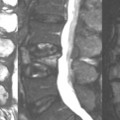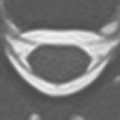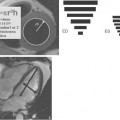25 Dual-Echo Steady State (DESS)
A further modification of steady-state gradient echo technique involves the acquisition of two different echoes during each repetition time. The first echo is the free induction decay (FID) gradient echo used in the spoiled GRE sequence (Case 23), and the second is the RF echo (SE) used in the backward-running FISP (PSIF) sequence (Case 28). The separation and acquisition of these two echoes are illustrated in Fig. 25.1. As noted previously, the signal decay after excitation is called the FID and can be sampled with any gradient echo technique. Any RF excitation pulse also has refocusing capabilities. An echo that is formed using a refocusing RF pulse is called a spin echo (SE). With DESS, each RF pulse generates an FID and a SE signal in the steady state. In the pulsing diagram shown in Fig 25.1, the gradients are employed such that for the first echo, the FID is rephased and the SE is spoiled, and for the second echo, the reverse is true-the FID is spoiled and the SE is rephased.
The DESS sequence starts with a slice-selective low-angle excitation pulse (1 in Fig 25.1), with the FID sampled (2 in Fig. 25.1
Stay updated, free articles. Join our Telegram channel

Full access? Get Clinical Tree








